If I said this was a crazy year, it’d be an outrageous understatement. I won’t get into all that (such as millions dead around the planet from a new virus and insane politics). This is our sixth autumn in our Oregon beach house, and I’d been wanting to spend more time here in October and November to increase my mushroom knowledge. I’d learned about golden chanterelles over the years and got pretty good and finding them. And they are delicious. I’ve studied the books, especially Mushrooms Demystified by David Arora, and watched hours of schrooming on You Tube (warning: some of those people don’t know what they are talking about.) I expected to be back in Colorado by Thanksgiving, but the covid has us pinned down. It’s too risky to fly, and since I am about blind in one eye and have cataracts in both, I can’t drive at night, making driving a bad option. On the positive side, it’s given me more time to forage mushrooms and hunt for beach rocks.
It’s December 11, 2020 and the best mushrooming is about over for the year. My knowledge of fungi exploded exponentially over the past two months.
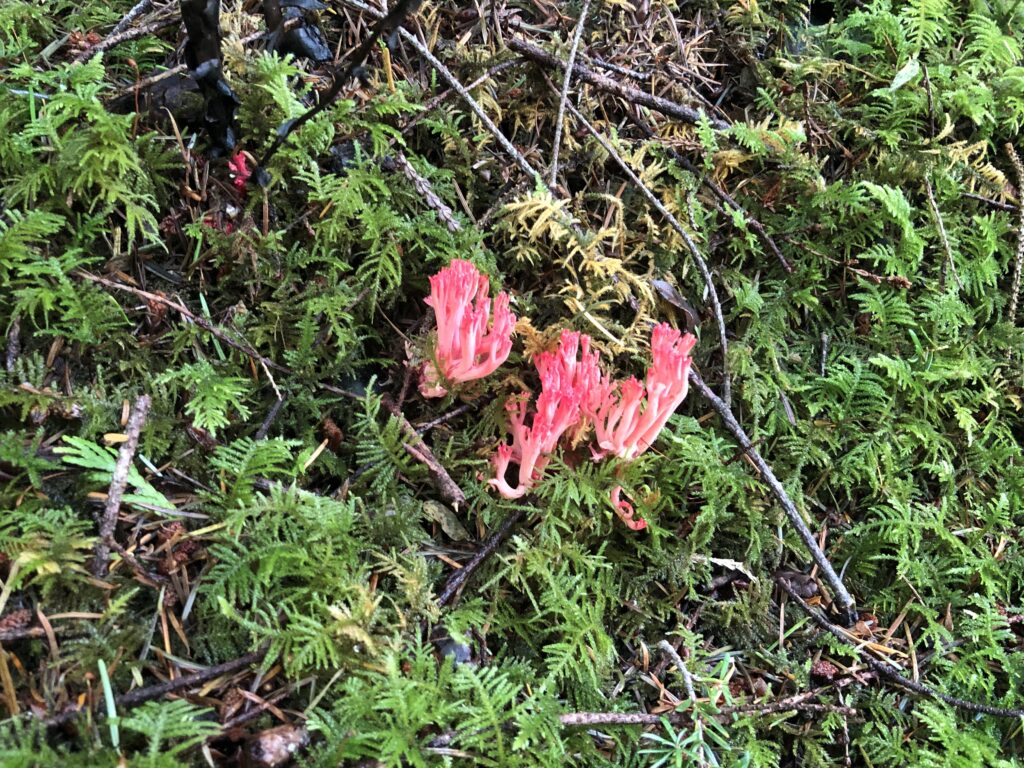





This set of pictures is from my first mushroom hunt after returning in early October. I came back with enough chanterelles for a meal and my first ever fresh lobster mushrooms. I found a Lobster Mushroom You Tube video by a chef in Tempe, AZ who obviously is a huge fan of these rare delicacies, followed his recommendations, and found the result unexpectedly delectable. They aren’t actually mushrooms. They are a mushroom, commonly russula brevipes, that has been completely devoured by a mold, hypomyces lactifluorum, turning it from off-white to lobster red. Oddly, they look and taste like lobster meat. It was exciting to add a second eatable to my foraging knowledge.

My daughter, Hillary, has been out here since Labor Day, working remotely at her job in D.C. In January, her firm sent her to Switzerland to work with a client in Basel, which coincidently is where many of our ancestors lived. Being thoughtful, Hillary bought this antique mushroom diagram for me from a bookseller. She gave it to me when I arrived in October. See the fat mushroom at the lower left? Boletus edulis. Steinpilz is the name in German (porcini in Italian, cep in French, penny bun in England, and king bolete in the U. S.). They are revered by mushroom eaters in Europe, and for good reason. They are possibly the most delicious mushroom on Planet Earth.
I was very pleased with my gift, in part because of the king bolete – I’ve been on the hunt for several years. I’ve no doubt seen them, but with so many different boletes out there, some toxic, I was never quite sure. It’s pretty tricky. But once you learn the king bolete you are good. It’s quite unique.

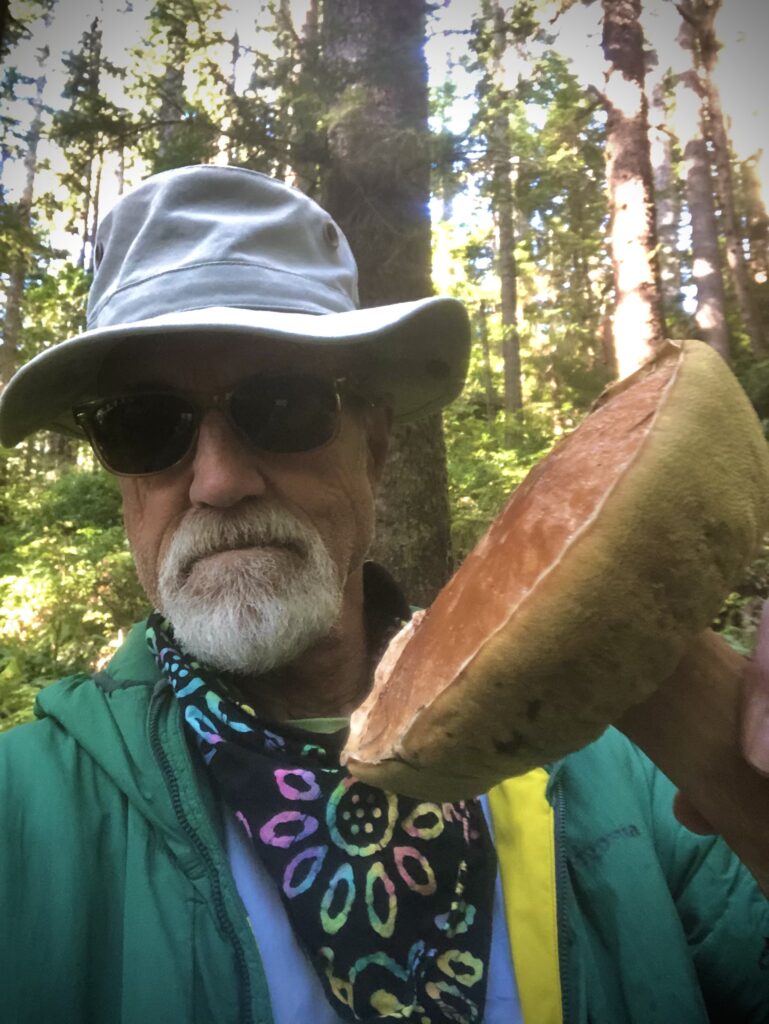
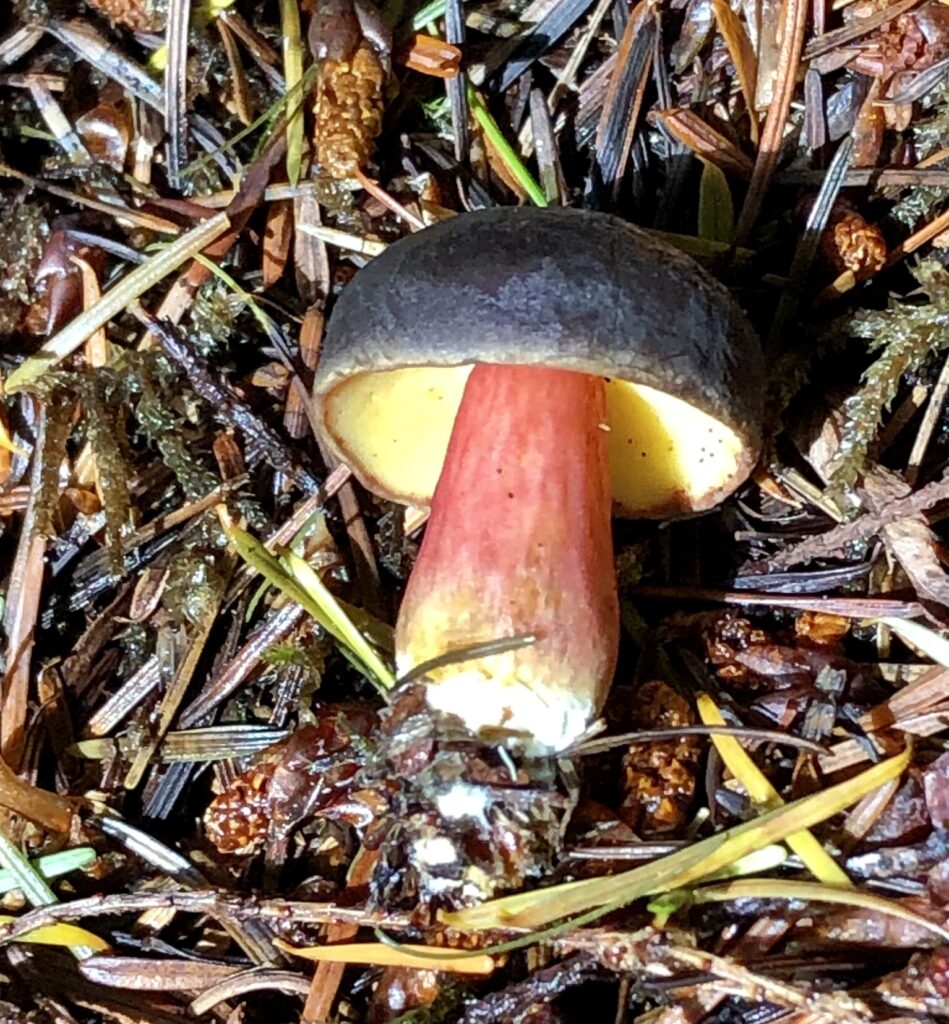
Next hunt: many chanterelles




Once I felt confident in my king bolete identification knowledge, the Universe offered me more.
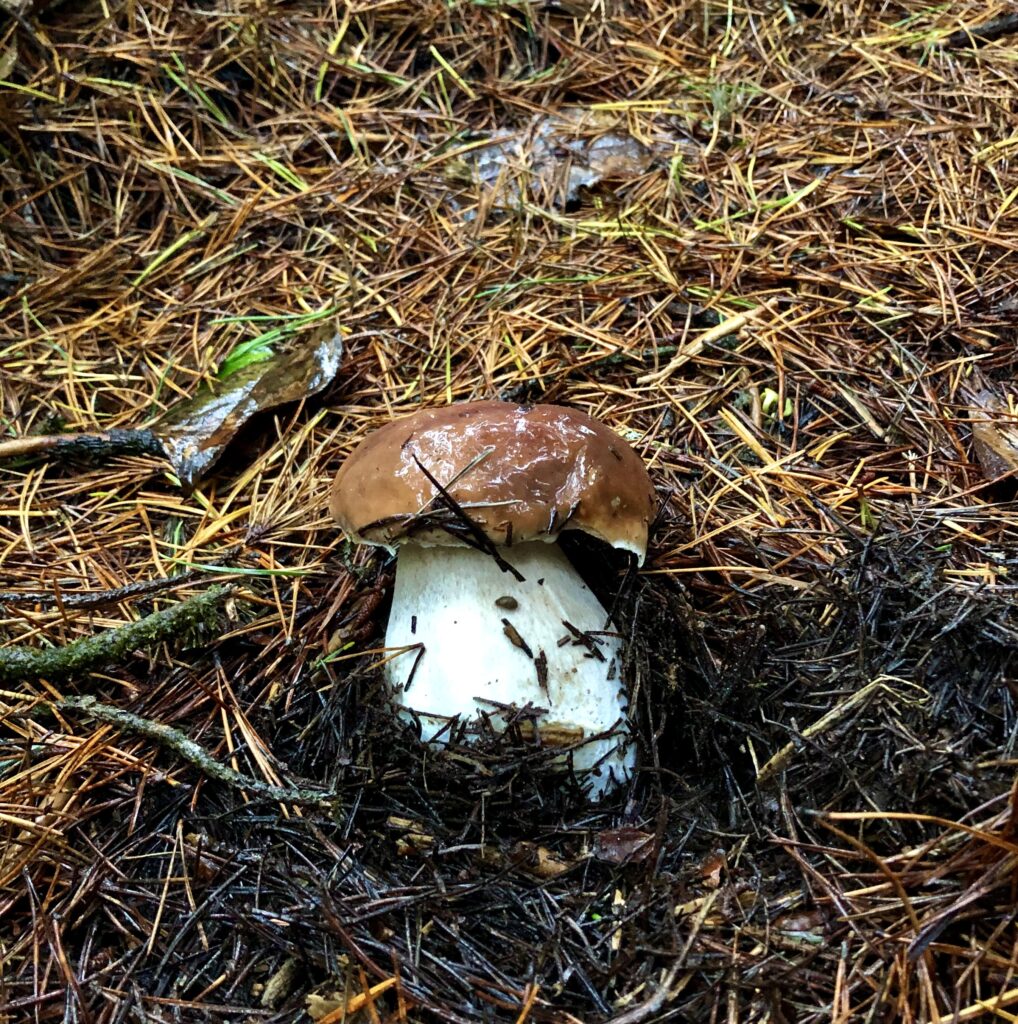



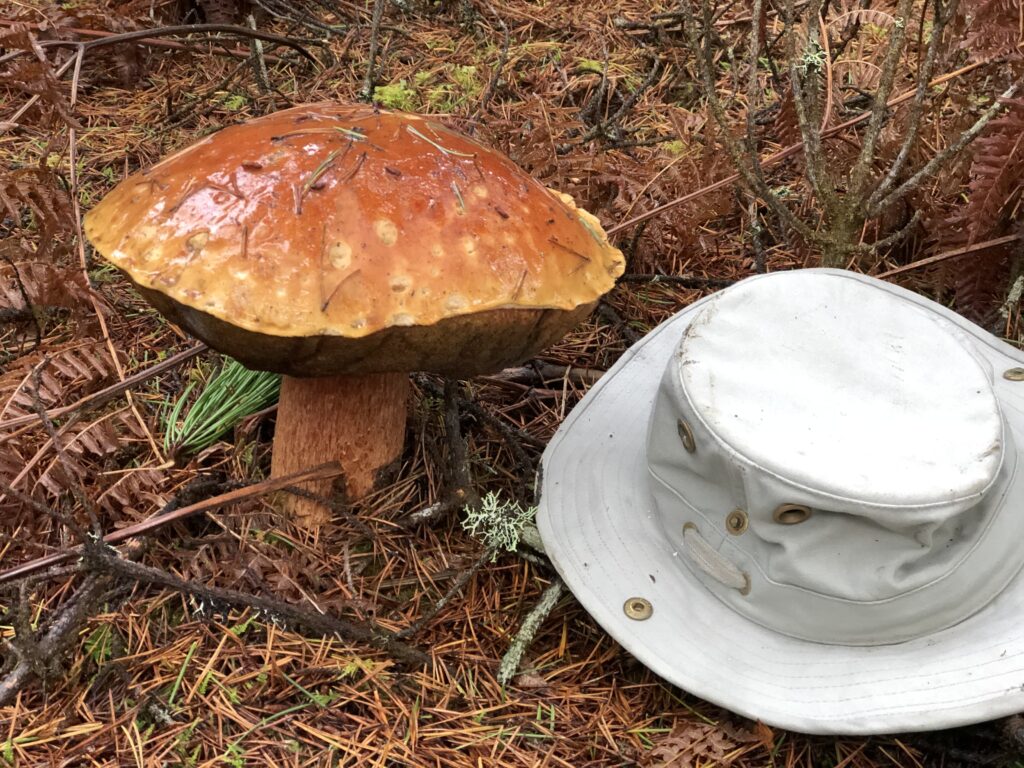
I practically fell over when I came across this giant. It had enough insect damage that I decided to leave it where it was. A day later, I found a bolete growing on the hill behind our house. It’s not a king but similar to a Xerocomus genus member, maybe an Aureoboletus of some type. It got me to thinking. The next day I walked back to the mushroom forest, a ten-minute walk, and brought that big schoom home, where I spread it around under my fifty-plus year-old Douglas firs, Sitka spruce, and Pinus contortus. The next day I returned to the spot and filled a backpack with the sphagnum mossy duff from under and near that monster bolete. It had dawned on me that it would have released its spores by that stage of development. Won’t it be great to have king boletes all over my hillside? Yes.


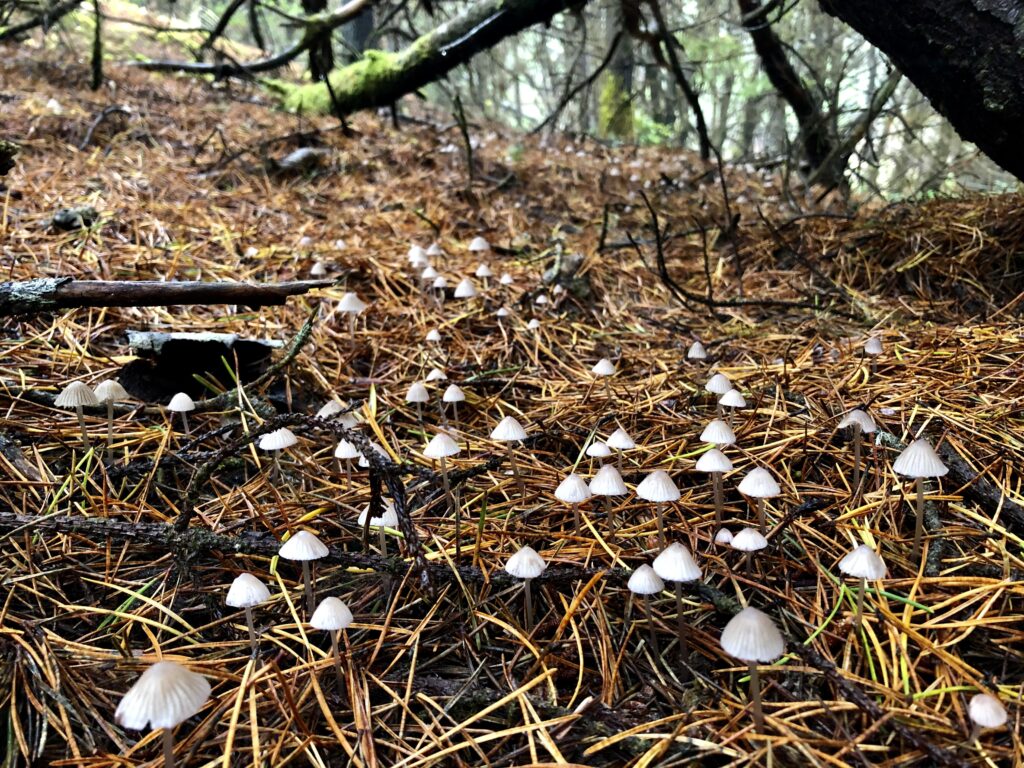











By early December mushroom activity slowed considerably due to colder weather. We had a late warm spell that helped. I still found some golden chanterelles. The king boletes seemed to be done for the year.
Then I got some bad news. A very close friend passed away. Big Terry. A great guy who had been sick for a decade and suffered way more than one should. We met in college. I was grieving. Couldn’t speak after his wife called with the news. So, like I do, I immersed myself in Nature. Went for a six-mile walk on the beach. I could almost see Terry in the clouds. I felt his presence in the energy of the ocean. I believe we are all one – different perspectives for the Universe. My grief dissipated as my sureness cemented that Terry was in a place of Peace and Wonder, someday to be joined by family and friends.


On my way home, I took the path that goes through a mushroomy forest. I didn’t see much in the way of fungi. It had been cold at night, down into the thirties. Nonetheless, I took a detour through the dripping wet, thick undergrowth to a place I knew king boletes grow. I looked all around and didn’t see a single one and was about to head home. No wait. What’s that by the pine tree over there?

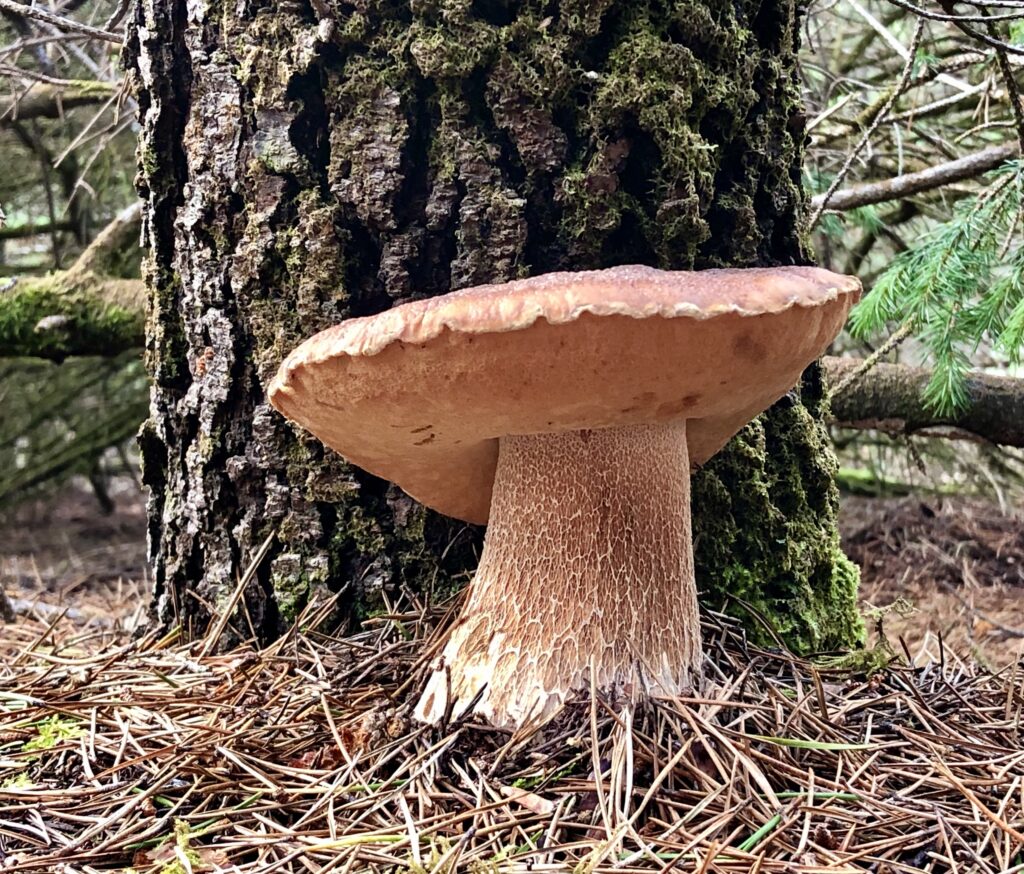
Looky there. A perfect king bolete. The most handsome one I’ve seen. Check out the stunning reticulation on the stem. A thought formed. Carefully, I coaxed the dapper young king from the duff, keeping the base and rootlets intact. It was large enough to make me several delicious sandwiches, but I had another plan. I thanked Big Terry and went on my way.

Here it is five days later. On the hill behind my house where I transplanted it. I never heard of anyone transplanting mushrooms, but it’s doubled in size.


I call it my Big Terry king bolete. It will drop thousands of spores, some of which will grow into mushrooms, joining their roots with the roots of the Douglas fir and its massive mycelium; one with the tree that’s joined to the earth that’s one with the sky, providing oxygen and biodiversity necessary for human life. And on top of that, the Big Terry King will provide us humans beautiful mushrooms from here till eternity. Thank you my friend.


As we have done for decades, we had a family art contest: The Big Terry King Bolete drawing contest. We do art contests once in a while these days, but more this year due to the coronavirus lockdown situation. Martelle is the judge as always (lacks artistic talent). Entries came from all four daughters, all one granddaughter, and me. Here are the entries.

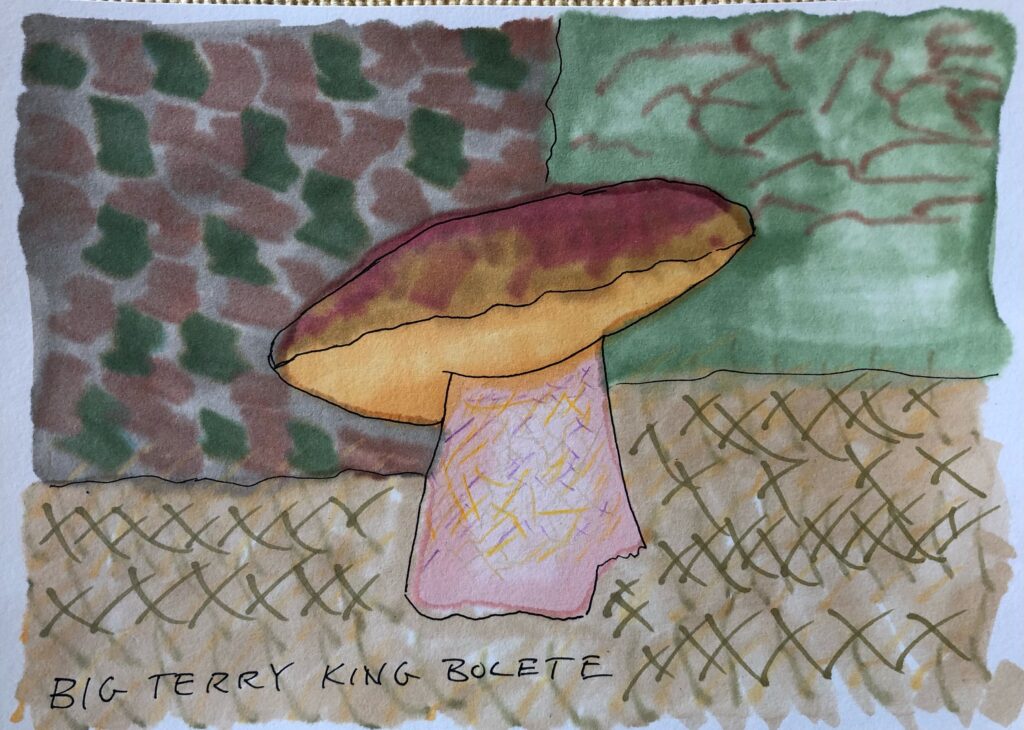




Thanks to all for helping commemorate my great friend.
